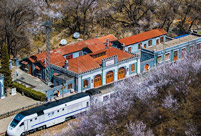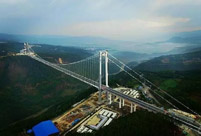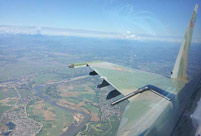

BEIJING, May 6 -- Archaeologists working in the 600-year-old Forbidden City, or officially known as the Palace Museum, in Beijing have discovered foundations of buildings from an even earlier dynasty at the site.
Underneath the former royal palace used by the Ming and Qing dynasties (1368-1911) are foundation remains that could be from as early as the Yuan Dynasty (1271-1368), said Li Ji, a senior researcher with the Institute of the Palace Museum.
The palace complex was home to Chinese emperors and was the highest center of power from 1420 to 1911.
Li said the new findings would help understanding of the palace's history and of the layout of ancient Beijing.
The archaeologists also discovered foundations of a previously-unknown construction from the early Ming Dynasty and shards of imperial porcelain believed to have been intentionally buried at the site.
 Beijing Style: ready for bare legs
Beijing Style: ready for bare legs Century-old station sees railyway evolution
Century-old station sees railyway evolution Amazing scenery of Xisha Islands
Amazing scenery of Xisha Islands Enthusiasts perform Kung Fu at Wudang Mountain
Enthusiasts perform Kung Fu at Wudang Mountain Stunning photos of China's fighter jets in drill
Stunning photos of China's fighter jets in drill Monk's mummified body to be made into a gold Buddha statue
Monk's mummified body to be made into a gold Buddha statue Asia's longest and highest suspension bridge to open to traffic
Asia's longest and highest suspension bridge to open to traffic China's first interactive robot looks like a beauty
China's first interactive robot looks like a beauty Vietnamese Su-30 fighters fly over Nanwei Island in South China Sea
Vietnamese Su-30 fighters fly over Nanwei Island in South China Sea Top 20 hottest women in the world in 2014
Top 20 hottest women in the world in 2014 Top 10 hardest languages to learn
Top 10 hardest languages to learn 10 Chinese female stars with most beautiful faces
10 Chinese female stars with most beautiful faces China’s Top 10 Unique Bridges, Highways and Roads
China’s Top 10 Unique Bridges, Highways and Roads Unpredictable Trump could swing either way on China
Unpredictable Trump could swing either way on China Military institution scandal highlights shady Putianese private clinics
Military institution scandal highlights shady Putianese private clinics How to maintain property in communist system looms large as land warrants expire
How to maintain property in communist system looms large as land warrants expire Yiwu, China’s wholesale capital, switches its economic growth engine from manufacturing to design
Yiwu, China’s wholesale capital, switches its economic growth engine from manufacturing to designDay|Week